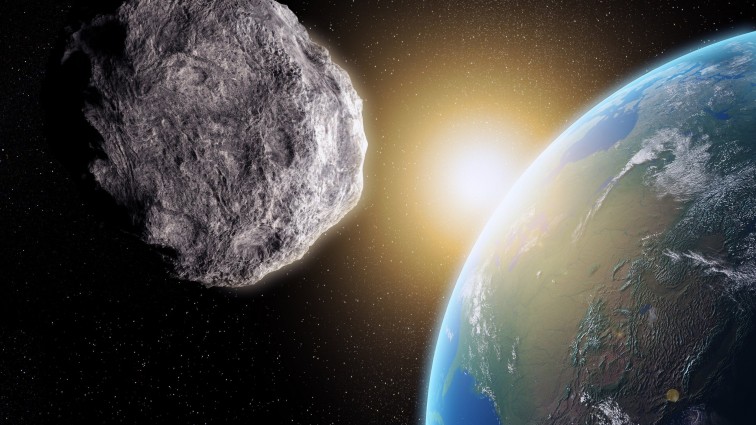The White House has revealed its plan to handle ‘killer asteroids’

Ever wondered what would happen if the earth actually found itself in the path of a huge asteroid?
Would we send a team of oil rig workers to destroy it with a nuke a la Armageddon or is there something less extreme involved?
Well, according to the outline of an emergency plan that has been unveiled in a White House paper, we aren’t quite there yet.
The National Near-Earth Object (NEO) Preparedness Strategy has laid down the process that might be followed by the United States if an asteroid or other NEO is headed our way.
First up it has suggested that more needs to be done to improve detection systems to increase the chances of doing something to halt its path.
Asteroid apocalypse plan (Getty) An artist's depiction of an inhabited Earth-like planet facing an imminent collision with a comet. The nigntside glows with city lights.
The plan would involved sending a probe to the asteroid to determine its size and weight
Then, once the asteroid has been detected, it suggests building an AI space probe with lasers and sensors to find out more about the asteroid including details about its size and weight.
Can you watch this video of polar bear repeatedly falling over without laughing?
A poignant last photo of a young girl, 1850. POSING with her child, this 19th century mother looks miserable as she stares at the camera. But her sad expression may be understandable after it becomes clear she is posing for a macabre photo with her dead daughter who is sitting peacefully on her lap. These remarkable pictures from The Thanatos Archive show the morbid way that the deceased were remembered in the late 19th century. The invention of the daguerreotype — the earliest photographic process — in 1839 brought portraiture to the masses. It was far cheaper and quicker than commissioning a painted portrait and it enabled the middle classes to have an affordable, cherished keepsake of their dead family members.
Known as post-mortem photography, some of the dearly departed were photographed in their coffin.
The paper, which was put together by the Inter-agency Working Group for Detecting and Mitigating the Impact of Earth-Bound Near-Earth Objects, is undecided on whether the US should intervene if the asteroid is not headed for them.
It added: ‘NEO impacts are a global hazard and could have major environmental, economic, and geopolitical consequences detrimental to the United States, even if the impact is beyond US territory.
‘Although currently a global leader in detecting and tracking NEOs, the United States will depend (in part) on international cooperation and coordination to help develop capabilities for characterization and future capabilities related to the development and implementation of deflection and disruption capabilities for NEOs.’
Политика конфиденциальности | Правила пользования сайтом








